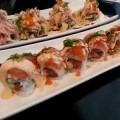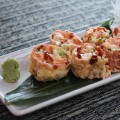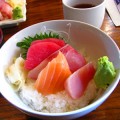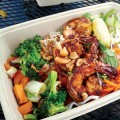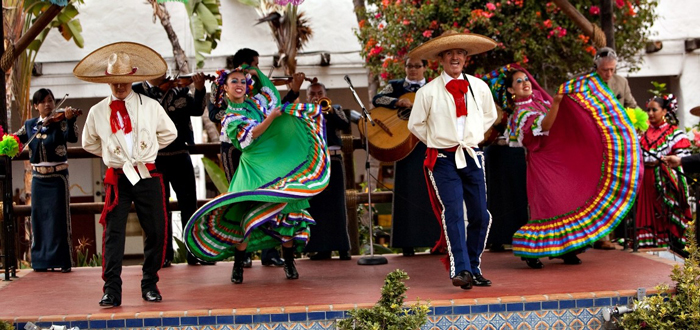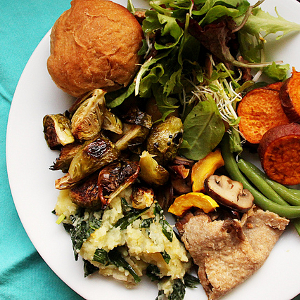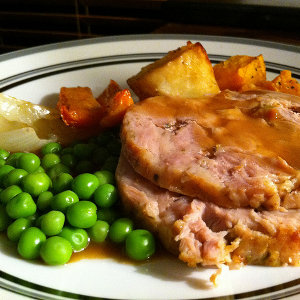The massive line outside Sushirrito in Palo Alto is the first indicator of its popularity. Located near trendy neighbors on University Avenue like Blue Bottle, Umami Burger, and CREAM, the opening of a Sushirrito in the South Bay gives foodies easier access to experience the hype of a place that was once available only in San Francisco.
A fusion of Asian ingredients in Mexican food form is what people seem to want in their bellies at the moment. Sushirrito serves large sushi rolls which can be eaten like a burrito. The line moves quickly thanks to the assembly line style of manufacturing the rolls. It very much resembles a Japanese Chipotle.
The first employee takes the order and begins the base of the roll. As is the style of many fast casual restaurants, most menu items begin with the same base ingredients and differentiate later in the line. In this case, the base is nori, sushi rice, and sauces on top of plastic sushi rolling mats. Each subsequent employee down the line adds ingredients that customize the roll into the flavor ordered.
Most of the rolls share the same sushi rice, ginger guacamole and wasabi mayonnaise sauces. The sushi rice used on all rolls was soft and sticky but with separated grains. Ginger guac and wasabi mayo sauces sounded intimidating but they were mild and mostly overpowered by other ingredients, except in the Satori roll. I hardly tasted ginger in the guacamole.
Lava Nachos ($8) are available in limited supply and they are good, so make sure to order it first. At this quantity, $8 is slightly steep, but the brown rice chips topped with tuna picante and melted pepper jack goes together well in a spicy appetizer.
Geisha’s Kiss ($12) with yellowfin tuna is the best roll here. It uses a sesame white soya sauce which could hardly be seen or tasted given the variety of other ingredients. The tuna is claimed to be hand line caught and is flavorful on its own. Crunchy lotus chips add much-needed variation in texture that the other rolls lack. I suggest getting this roll for Sushirrito first-timers.
Another roll worth ordering is the Sumo Crunch ($10.50) with shrimp tempura and sriracha aioli. For those who like a spicy crunch, this roll is it. Red tempura flakes coat the rice on the outside, giving it the appearance of being wrapped in a red sheet. The red flakes give the roll a nice crunch, hence the name. However, don’t be fooled by the Surimi crab, it is just imitation crab, which is made of ground fish. At the end of the day, the sumo crunch is still at tasty roll.
The Satori ($13) contained raw Hiramasa (Yellowtail) slices, which were of decent size though not too flavorful on their own. This roll had the most potential for preserving the authenticity of sushi rolls, except for the large proportion of wasabi mayonnaise coating the ingredients. Unfortunately, much of what stood out about this roll was the mouthfeel of slippery fish in mayonnaise and the flavor of wasabi. I am not sold on the idea of putting oven-baked Salmon into a roll as is done in the Salmon Samba ($11). It is unsuccessfully balanced by tempura asparagus, cucumber and lots of lettuce, resulting in a bland dish.
Although it’s a bit of a pricey lunch, given that a Sushirrito contains the same ingredients as a sushi roll it is probably a better deal than buying a few rolls at a Japanese restaurant. The discouraging line out front ends up moving very quickly through the small store as the assembly line works efficiently. Food is served in eco-friendly take-out containers, which works well with the limited seating.
Time will tell if the sushi burrito is a fad or the beginning of a new food classic. For now, at least anyone interested in the hype can enjoy a roll or two without trekking to the city.
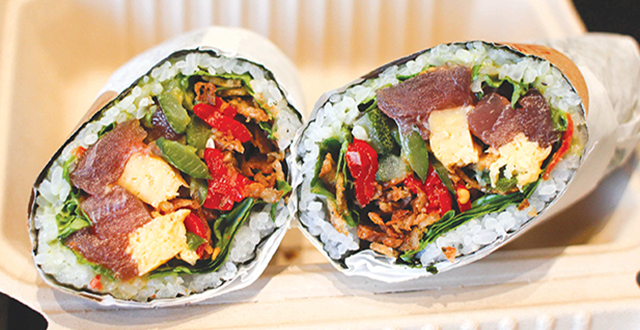
 Fall Season is Popular for its Limited-Release Brews
Fall Season is Popular for its Limited-Release Brews  SJ Q&A: Tom Clark, Santa Clara Valley Brewing
SJ Q&A: Tom Clark, Santa Clara Valley Brewing 